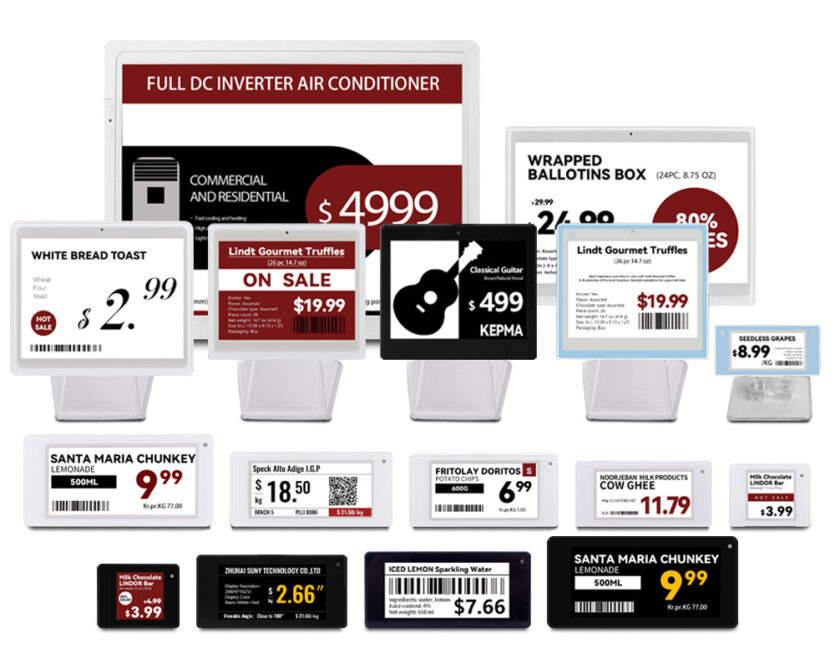Selecting the right Electronic Shelf Label (ESL) size is crucial for optimizing your store’s operations and enhancing the customer experience. At DT Shelf, we offer a variety of sizes to suit different product displays, ensuring that your labels are not only functional but also visually appealing.
Why ESL Size Matters
The size of your labels affects how information is displayed and perceived by customers. A well-chosen size ensures that pricing and product details are clear, readable, and easy to update. Whether you’re tagging small items or large products, the right size can make all the difference in the effectiveness of your labeling strategy.
Small ESLs- Perfect for Compact Products: Small items like cosmetics, accessories, or packaged foods.
Our smallest labels, typically around 1.13 inches, are ideal for compact products. These labels fit neatly on narrow shelves, providing essential information without cluttering the display. Despite their size, these labels offer crisp, clear text, ensuring that prices and details are easy to read.
Medium ESLs – A Versatile Choice: Medium-sized items like electronics, clothing, or household goods.
Medium-sized ESLs, ranging from 2.1 to 2.6 inches, offer a balance between visibility and space efficiency. They are versatile, making them suitable for a wide range of products. These provide more space for additional information, such as promotional messages or product features, without overwhelming the customer.
Large ESLs – Maximum Visibility for Larger Items: Large products like appliances, furniture, or bulk items.
For larger items, our 4.2-inch ESLs deliver maximum visibility. These labels are designed to grab attention, making them perfect for highlighting high-ticket or bulky products. The larger display area allows for more detailed product information, enhancing the shopping experience.
How to Choose the Right Size
1.Consider Your Product Range:
Start by evaluating the types of products you sell. Smaller items require smaller labels, while larger products benefit from larger displays. Think about the information you need to convey—compact ESLs for basic details, larger ones for more complex data.
2. Shelf Space and Layout:
Assess your shelf space and store layout. If you have narrow or crowded shelves, smaller labels are a better fit. For more open spaces or prominent displays, larger ESLs can make a bold statement.
3.Customer Interaction:
Consider how customers interact with your products. Are they browsing quickly or spending time comparing options? Larger labels can provide more information at a glance, while smaller ones work well for quick decisions.
4.Consult with DT Shelf Experts:
Not sure which size is right for your store? Our team at DT Shelf is here to help. We can guide you through the selection process, ensuring that you choose the ESL sizes that best meet your needs and enhance your store’s efficiency.
